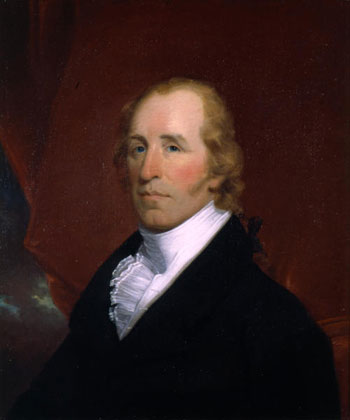The Corps of Discovery
(1803 -1806)
The Corps of Discovery (1803-1806)
In 1803, President Thomas Jefferson assigned two young men from Virginia—Meriwether Lewis and William Clark—to lead an expedition along the Missouri River with the goal of exploring the Louisiana Purchase and finding a water route to extend American commerce to the Pacific coast. In addition, Jefferson wanted the men to take a scientific approach by collecting as much information about the geography, people, and samples of flora and fauna in this unmapped part of the nation along the way.
Lewis and Clark began by establishing an encampment at the mouth of the River Dubois in Illinois in December 1803. Over five months, William Clark recruited and trained men for the rigors of the upcoming expedition. On May 14, 1804, the corps departed the camp for St. Charles, Missouri, and traveled up the Missouri River with a crew of more than 45 men.
The explorers arrived back in St. Louis on September 23, 1806. During their 28-month journey, Lewis and Clark learned about Native American cultures and social customs, taking notes and keeping journals. The Corps of Discovery returned from the expedition with a wealth of information about the people, plants, geography, and species they had encountered, but they didn’t do it alone.
The Role of Sacagawea
Along the way, a bilingual Shoshone woman named Sacagawea decided to join the expedition. Her skills as a translator were instrumental to the success of the mission, all while she cared for her son, who had been born merely two months before joining the expedition. The disarming presence of the mother and child reaffirmed the trust of many of the Native tribes the adventurers encountered, as some of the tribes had never before witnessed white faces.
St. Louis After the Expedition
In the fall of 1809, three years after the successful completion of the expedition, Sacagawea, her husband Toussaint Charbonneau, and their son Jean-Baptiste Charbonneau, traveled to St. Louis to follow up on a promise. On the return expedition, they had remained behind where they had initially departed—the Hidatsa-Mandan settlement. Before separating with the corps, however, Clark promised that he would provide the family with land to farm if the parents agreed to let Clark educate their son, and they took him up on the offer three years later.
After a failed attempt at farming in St. Louis, Sacagawea and Charbonneau left Baptise with Clark (now the boy’s godfather) to continue his education. In 1811, they departed the area to join a fur-trading expedition while Clark made St. Louis his home from 1807 until his death in 1838. His house was located on the grounds of what has since become the Jefferson National Expansion Memorial and the St. Louis Arch.
[Sources: Charlie Brennan, with Bridget Garwitz and Joe Lattal: Here’s Where: A Guide to Illustrious St. Louis. St. Louis: Missouri Historical Society Press, 2006 | Carolyn Gilman: Lewis and Clark: Across the Divide. Washington, D.C.: Smithsonian Books, 2003 | Jefferson National Expansion Memorial website, operated by the U.S. National Park Service, https://www.nps.gov/jeff/historyculture/corps-of-discovery.htm | Lewis and Clark: The National Bicentennial Exhibition website, https://www.lewisandclarkexhibit.org | https://www.history.com/topics/native-american-history/sacagawea]
